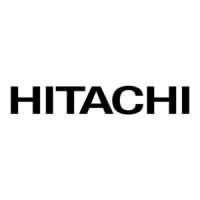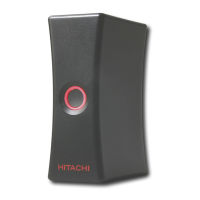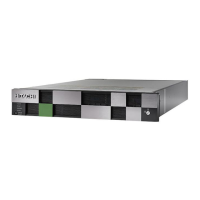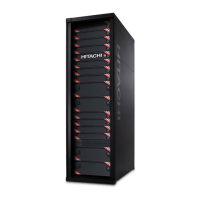Hitachi Unified Storage VM Product Overview Guide
1–10
System overview
Primary data de-duplication
The Hitachi File System has built-in data deduplication capability that
reduces storage consumption, and is particularly effective when used for
server virtualization or VDI. Unlike other NAS products, the Hitachi File
System achieves data reduction with minimal impact on overall system
performance, so dedupe can be enabled even when the system is under
load. Combined with Hitachi flash technology, the Hitachi File System can
deliver superior performance for a fraction of the cost.
Consolidation and virtualization
Scalability enables consolidation, particularly of older hardware and
"storage islands". Creating a unified, large-scale storage solution allows
storage administrators to combine the functions of what were separately
implemented file servers, reaping cost-savings and management benefits of
a consolidated platform. Any successful consolidation strategy has to
support virtual server and virtual desktop (VDI) environments. The Hitachi
File System will operate very effectively in virtualization technology, such as
VMware, providing functionality like space-efficient writeable clones, which
enables fast backup and recovery of VM images.
Storage virtualization
Virtualization is about making more efficient use of high performance NAS
server. The more powerful the server is, the better suited it is to virtualize
a larger number of less capable, under-utilized devices. HNAS can virtualize
3rd party NAS devices and relocate data in the background, allowing the
customer to preserve existing assets until they can be taken out of service.
Our implementation of virtual servers allows groups to retain "ownership"
of their virtual entity within a single physical server. Thin provisioning makes
it possible for multiple virtual servers to share a single pool of storage
devices.
The Hitachi File System offers benefits beyond sustained, predictable,
consistent file server performance. Because of its architecture, the Hitachi
File System can adjust to the users' workflow and data sets. Not all data has
the same "value" to user workflow. When data is first created it may be
extremely valuable and must therefore reside on storage built for high
performance. As the data ages, application and eventually archival
requirements tend to dominate, imposing further conditions on the storage
where the data now resides. Yet, once an application knows where the data
resides, data relocations are difficult. The Hitachi File System eliminates this
difficulty by providing a mechanism to migrate transparently across multiple
Item Description Item Description
1 Management block (ethernet switch) 2 Storage block (data drives)
3 Management block (server/ controller
chassis)
4 Fibre channel switch
5 Management block (system
management unit)
